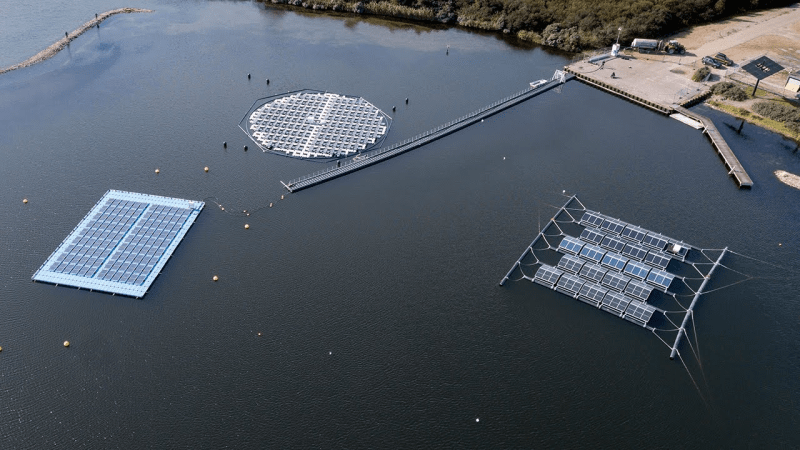Towards large-scale FPV
Floating Photovoltaics (FPV) is a rapidly growing market. The first commercial FPV plant, which was around 170 kWp, was realised in 2008 on an irrigation pond in California. Today, more than 2 GWp is installed globally.
Although the present-day solar plants have outgrown the ‘pond’ phase, the commercial developments are still on inshore lakes with relatively mild conditions. In the Netherlands, we are experiencing a rapid increase of inshore floating solar as well. By the end of 2021, an installed capacity of 200 MWp is expected nationwide.
MARIN has worked on two major inland water projects. Four different designs were tested at Lake Slufter on the Maasvlakte in 2017. Here MARIN monitored the system dynamics with a range of sensors. Then in 2020 a successor project was realised at the Oostvoornse Meer (Lake). In addition to onsite instrumentation, MARIN also had the chance to work on the numerical simulations of the hydrodynamics. With significant wave heights of around 1 m in the extreme condition, this lake is taking FPV a small step further towards being deployed in less benign locations. In total three systems, based on different floater types, were installed and equipped with sensors.
Some industry parties are also moving towards Offshore Floating PV, with multiple, pre-commercial pilots going on. Undoubtedly, the scale is driving FPV offshore. Hence, a power density of approximately 150 Watt/m2 can be obtained, which is equivalent to 150 MWp/km2. This illustrates that, in order to become a substantial part of the future energy mix, FPV should grow to the square kilometre scale. However, this is unpractical and undesirable on inland lakes.
FPV is especially interesting from a hydrodynamic point of view as there are many different floater types which can be considered such as truss constructions, semi-submersibles, interconnected pontoons and mattresses. MARIN has had the chance to work with each floater type at least once. Each floater has its own hydrodynamic challenges, but the common ground is that all FPV constructions are light, large and flexible. We look forward to a bright, sunny future!
William Otto | w.otto@marin.nl


